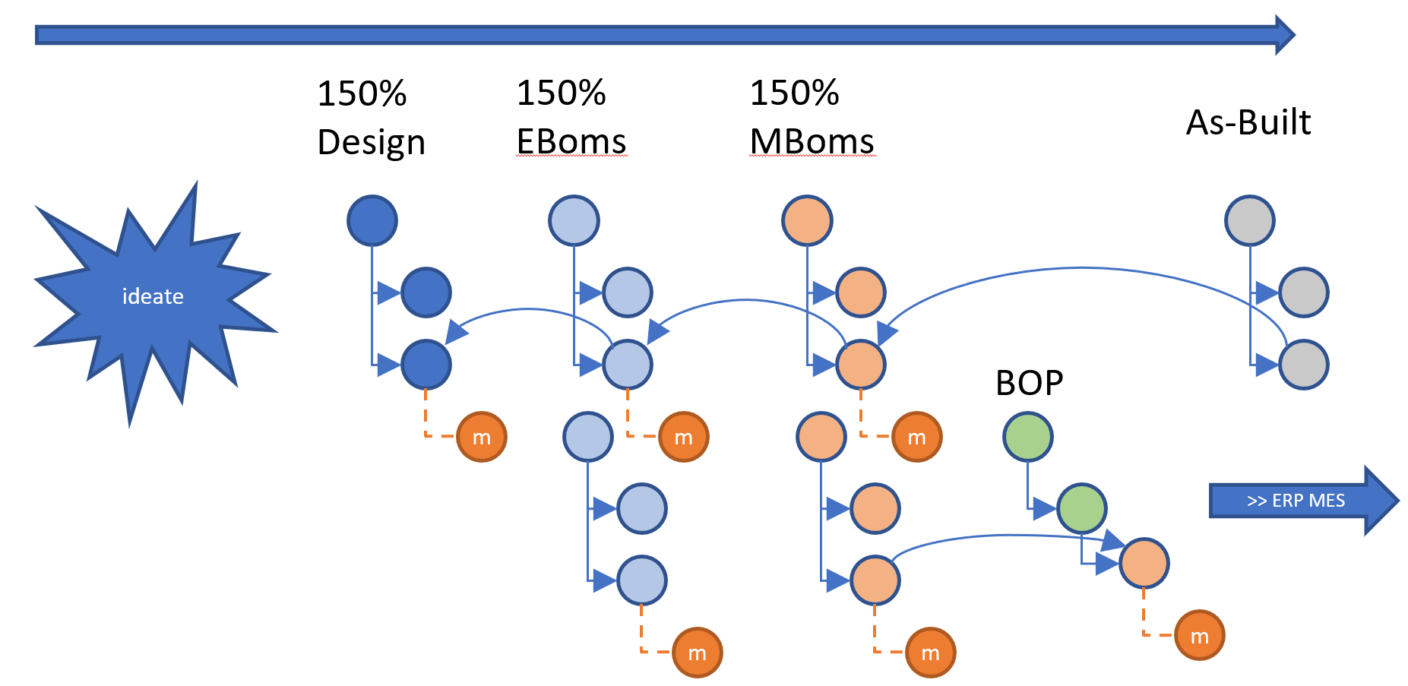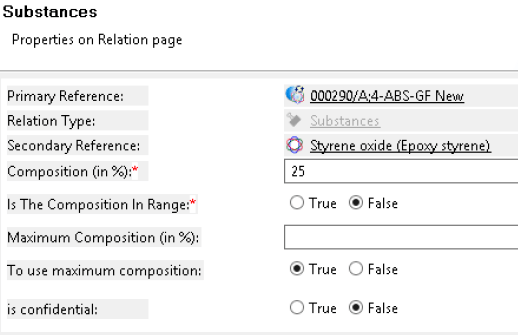Material Management – in a Digital Enterprise

by Harri Taskinen-Albrecht • 6 min read
Material management as such can mean a multitude of things. Maybe factory material flows, simple stock management or just the capability to define what something should be made from. The term is ambiguous and could be any of these:
- Factory material flow meaning enough correct materials to workstations on time
- Stock management
- Capability to define a raw material
- Defined Material Requirements
- Raw material needs
- CAE Material properties
- Material regulations / compliance
- Recycling
- And many others
This blog is about handling materials with PLM over the whole lifecycle from ideation to recycling.
Why does it matter?
Age old assumption is that material handling is easy, ideate, design something, set an agreed attribute to some material definition and send it forward in the design process. This approach is basically the same as eating a pizza when one should eat according to a food triangle:

Yes – you defined something, but you are missing out on a lot which will cause issues in the long run.
Material Management Challenge
Usually, material information is done in a multitude of different silos which are not connected and there is no lifecycle handling nor processes attached to then defining how to add new or obsolete old materials. What you end up with is chaos where everybody uses maybe similar materials, and the complexity of materials is not understood by users.
As an example – I’ll highlight a few everyday problems.
- Sheet metal – how to define consumption as material comes in specific sheet sizes? Bend K-factors are not simply tied to material properties but also the thickness of the material
- Injection molding – material is bought in granules, melted and has left over. How do you capture needed consumption / actual properties?
- Suppliers – they usually have their own materials. How do you know exactly what purchased components are made from?
- CAD/CAE – how do make sure the required material is the same in design and simulation?
- Variability – same product different material selections?
- Design > multiple EBoms > MBoms > ERP – how do you make sure correct materials flow through the process?
- Compliance / recycling – how can you be sure you are compliant to regulations? How do you handle recycling? What about the carbon footprint?
- Material info / specifications – where do you store them for easy access?
Easy examples but usually handled quite badly or not at all in many companies.
How to overcome these challenges?
First thing needed is a common material definition. Most companies have their own material definitions stored in separate systems like excels, databases, ERPs and suppliers. Materials need to flow through the whole product lifecycle from ideation to recycling across the whole digital enterprise.

Attach material items/revisions directly to the design revisions and utilize them in CAx systems. When creating engineering and manufacturing BOMs use same materials. BOPs and service BOMs will be based on them and utilize same definition. When sending information out to other systems include the materials.

Implement change managementand take control of changes during the whole life-cycle including used materials and their definitions.
Materials must be easily accessible – catalogues enabling finding materials also based on application / functional area. Adding classification to materials can also help with this and this needs to work both ways – possibility to easily identify products using a specific materials.
Implement processes for creating, importing and exporting materials in multiple formats also from 3rd party systems like GRANTA, Campus, Wiam, etc. Material lifecycle is a vital part of this – capability to obsolete, approve for prototyping / production.
Setup process for sending/receiving data to/from suppliers, correct and verified material information should flow through and back easily.
Do not duplicate material information and setup CAx systems so they utilize same material definition directly. Enable material inheritance for cases like the sheet metal example. Same material but different calculated values derived from for example thickness. You need an automated way of handling unit definitions – you might need to change units for different sessions accessing same material.
Enable automatic weight calculation > mass rollup for different variants.
Use substance compliance to meet industry’s strict environmental compliance requirements (REACH, RoHS, GADSL, IEC 62474) and define what materials are made of potentially down to the lowest substances. Systems utilize these against latest updated regulations to show if the product is compliant or not. For example: ABS (Acrylonitrile Butadiene Styrene CAS 9003-56-9) can have 15-35% acrylonitrile, 5-30% butadiene and 40-60% styrene or carbon steel which is made from iron and carbon.

Also make sure system can determine the actual carbon footprint of your product as well as capture the costs including raw direct/indirect costs related to materials.
Key business drivers
Basically this is one way to main business drivers:
- Weight > proper material management allows accurate weight analysis
- Money > manage direct/indirect material costs as well as unit costs
- Quality > simulation, manufacturing and suppliers have access to correct material definitions
- Compliance > know beforehand what material restrictions apply to your product
- Environmental regulations > reduce the risk of surprises and handle the carbon footprint
- Time > reduce effort and errors when handling multi-material / composite material parts
- Energy > reduce power consumption when designing electronics
Final thoughts
With the world being like it is questions on should you put effort on proper material handling through the whole lifecycle are moot > it is a must. While not exactly easy it can however be very rewarding and even lead to new innovations.
Luckily there are tools and people that can help you do it properly.
If this raised your interest – contact us to see how we can help, what your most critical pain points are and where the most value lies.
Attached are a few videos highlighting some solutions for this:
More posts

Metso aiming to improve supply chain collaboration through system simulation
Webinar (THIS WEBINAR WILL BE HELD IN FINNISH LANGUAGE) (Material will be distributed in English) August 22, 2023 – 09:00 CET Learn how Metso utilizes system simulation in their hydraulic system design. Research engineer Jesse Backman shares his learning path to system simulation, and how Metso could improve the collaboration of the supply chain through […]

Metso pyrkii kehittämään toimittajayhteistyötä systeemisimuloinnin avulla
Webinaari 22.8.2023 – 10:00 EET Tule kuulemaan kuinka Metso hyödyntää systeemisimulointia hydraulijärjestelmien suunnittelussa. Tutkimusinsinööri Jesse Backman kertoo oppipolkunsa systeemisimuloinnin pariin ja kuinka Metso voisi kehittää yhteistyötä toimittajaketjussaan systeemisimuloinin avulla. Tärkeimmät opit esitellään käytännön suunnitteluesimerkin avulla. Kuinka parantaa yhteistyötä toimitusketjussa systeemisimuloinnin avulla? Mitä systeemisimulointi on? Systeemisimulointi yhdistää yksittäisten komponenttien ominaisuudet ja vuorovaikutukset koko järjestelmän dynaamiseksi käyttäytymiseksi. […]

From Chaos to Clarity: Embracing Modularity
by Olli Uuttu • 8 min read Dear reader, have you ever wondered what goes into building a truly modular product? It’s not as easy as it may seem. While there are several proven methods available to plan and implement optimal modular architectures, it still takes effort, dedication, and discipline to succeed. I’m sure you […]